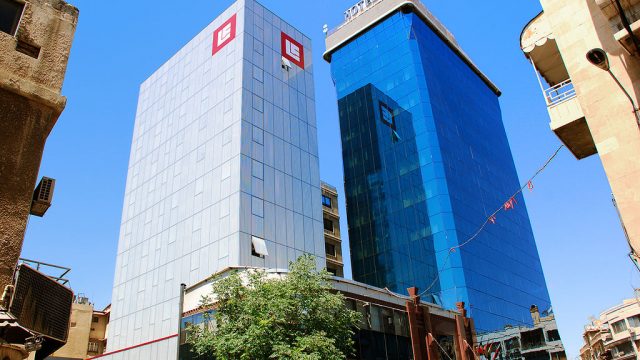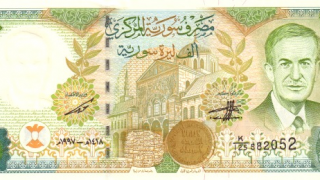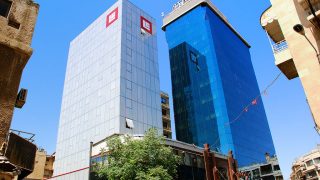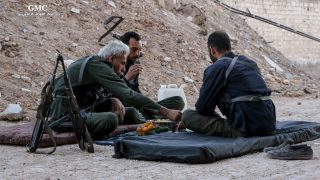This article is a contribution from "Al-Jumhuriya" website to the political economy file entitled: “Arab Economies and the Mirrors of Their Crises,” which is prepared by the Febrayer Network. You can read the introduction to the file (in Arabic) through this link.
Syria is facing worsening economic conditions with no clear end in sight. This is evident from frequent reports on poverty rates, displacement, disease outbreaks, food shortages, corruption, infrastructure destruction, and the substantial funds required for reconstruction.
In 2010, Syria was on the cusp of emerging as a robust economy. However, over the past 13 years, the violent war has shattered the country, resulting in its fragmentation into four distinct zones. In each zone, foreign powers wield substantial influence over local dynamics and the endurance of their allied or subordinate factions. However, these powers do not contribute to improving living conditions.
2010: The End of a Promising Economic Rise?
In the year 2000, Syria embarked on a promising economic trajectory coinciding with Bashar al-Assad's ascension to power following his father's rule. This period marked a transformative phase that had begun to manifest in the early 1990s. A youthful population, a skilled industrial workforce, and diverse natural resources, though not abundant, supported Syria's GDP growth, which remained reasonably robust despite political and climatic shocks impacting the economy.
These challenges included the aftermath of the 2003 invasion of Iraq, the mandated military withdrawal from Lebanon following UN Security Council Resolution 1559 in 2005, the establishment of an international tribunal to investigate Rafic Hariri's assassination, the suppression of the Damascus Spring, and a severe drought that affected the eastern part of the country from 2006 to 2010.
According to World Bank figures, Syria's GDP demonstrated consistent growth from 2000 to 2010, driven by a diverse range of production and contributions from various sectors.
However, everything changed dramatically and uncontrollably starting in 2011, when Assad's regime decisively refused to relinquish power or engage in a political transition, plunging the country into prolonged conflict. According to World Bank data, Syria's GDP in 2021 was approximately $8 billion. Nevertheless, the accuracy and comprehensive coverage of this figure across all of Syria's territories are questionable. Importantly, this GDP figure is roughly equivalent to Syria's GDP in 1978, indicating a regression of 40 years in economic terms, not metaphorically. This decline has persisted; by 2023, the GDP had further decreased to around $6.2 billion, with expectations of a 1.5% contraction in 2024.
The figures we reviewed do not suggest that Syria was prosperous in 2010. The economy suffered from inequitable wealth distribution, development programs focused on specific urban areas, corruption, high unemployment rates, and a volatile labor market. It was an economy where a single government decision could easily destabilize entire sectors. For example, in 2009, approximately 15% of Syrians lived below the lower poverty line, and about 30% below the upper poverty line. Poverty was significantly more concentrated in rural areas, particularly in Daraa, Deir ez-Zor, and Hama, reflecting the uneven distribution of wealth.
While the opening to Turkey facilitated the development of irrigation methods and increased the water supply essential for agriculture, it also contributed to the decline of industrial sectors, particularly in Aleppo. Aleppo's economy heavily relied on small workshops that struggled to compete with Turkish goods manufactured in large factories with lower production costs.
The Syrian Business Elite: Patronage Networks and War Economy
24 September 2016
Today: Disfigured Heads of a Dead Economy
The Syrian economy's collapse has led residents to rely heavily on aid and remittances from Syrian refugees and migrants. This has prompted the Syrian regime to implement sporadic measures to address the collapse, believing these measures to be temporary. One manifestation of this uncertainty is evident in the regime's desperate attempts to postpone the inevitable further depreciation of the Syrian pound.
In this effort, the regime has adopted temporary policies based on available options. These include utilizing credit lines from allies, conducting security crackdowns on the currency exchange market and its workers, stripping major traders of their capital, and imposing high taxes and levies on some. The regime has also created significant differences between the exchange rates for conversion dollars, remittance dollars, and import financing dollars, before nearly unifying them. Additionally, they have speculated in the foreign exchange market and frequently changed ministers of economy and governors of the Central Bank of Syria, hoping to find more stopgap solutions.
However, these policies ultimately failed to change the reality that a government employee's salary is now just slightly above or below ten US dollars. While these measures may have bought some time, it is not a significant amount of time by any means.
Today, the Syrian regime's economic policy has shifted dramatically, as it has recently turned to drug trafficking to cover some of its basic expenses. Given that rebuilding is more challenging than destruction, it is evident that returning the Syrian economy to its 2010 state is impossible under the current circumstances for several reasons.
The Syrian economy has undergone massive structural transformations, evolving into a war economy managed by narrow patronage networks and military militias whose primary goal is to finance their survival. This economy does not rely on production, capital movement, or public participation. Instead, it revolves around redistributing imported goods and providing a minimal amount of locally produced or manufactured goods intended for basic consumption.
The Syrian regime controls approximately 65% of the country's territory. Besides the regime, two other factions hold sway: an Islamist group led by Abu Mohammad al-Jolani and a Turkey-backed faction controlling 10%, and the US-backed Syrian Democratic Forces (SDF) holding 35% of the land. Each of these main parties in the Syrian conflict has its own government to administer its areas of control. However, none have succeeded in presenting an economic and governance model capable of sustaining itself or revitalizing the local economy.
Despite the presence of multiple governments and the use of three different currencies—the Syrian pound in areas controlled by the Syrian regime and the SDF, the Turkish lira in northwestern Syria outside regime control, and the US dollar de facto—the economies of all Syrian regions remain interconnected. Their primary aim is to secure the dominance of these factions and finance their survival by seizing available resources.
Palestinians are on the frontline of Lebanon’s economic crisis
24 April 2023
These factions are not economically isolated, as this would be fundamentally impossible. Their governments share trade crossings and routes, which have become pillars of the Syrian economy today. They complement each other and profit by selling goods purchased from other factions to the populations they govern. Additionally, they generate revenue through taxes and crossing fees imposed on the movement of goods through these routes.
Because Syrian oil is concentrated in areas managed by the self-administration affiliated with the Syrian Democratic Forces (SDF), all other parties purchase oil from them not to secure services but to raise funds. An example of this is Hay'at Tahrir al-Sham, which imposes a fee of $25 per barrel of oil that enters its areas of influence.
Like other military factions, Hay'at Tahrir al-Sham follows a policy of monopolizing Syrian oil in multiple ways: they impose fees on its transport and own companies responsible for its production and distribution. Additionally, regions controlled by the regime and the SDF receive Turkish goods from northern Syrian areas governed by opposition factions, while goods arriving at Syrian coastal ports are distributed throughout various regions. Goods from Iraqi Kurdistan also transit through SDF-controlled areas to reach different parts of Syria. Within this dynamic, these four military factions operate as major traders or distributors, exerting control over the economy, profiting from goods passing through their territories, and possessing the necessary infrastructure to benefit from all stages of goods transit, whether through "official" channels or affiliated entities and companies.
Based on this dynamic, these four military factions can sustain their status quo indefinitely. They use the funds generated to pay salaries to their fighters and acquire necessary equipment to suppress any local dissent. Agreements like de-escalation deals sponsored by Russia, Turkey, Iran, and other international understandings have stabilized the distribution of primary control areas among them for over four years.
Without the threat of economic collapse jeopardizing their structure, meaningful change can only be achieved through new international agreements that prioritize the living conditions and humanitarian needs of the Syrian people within the country and in neighboring states.
Over time, humanitarian conditions in Syria continue to deteriorate, presenting increasing challenges for international institutions to finance their operations there. Many donor countries are reluctant to provide additional funds to Syria, as there seems to be no foreseeable resolution to its ongoing need for financial assistance amid political deadlock.
What is the solution?
The Syrian economic crisis, along with the humanitarian and living crises, cannot be resolved without finding a political solution. While official statements from influential countries involved in the Syrian issue stress the necessity of a Syrian-led political resolution, not all Syrian parties are genuinely committed to achieving it if it risks undermining their power. Their current domination of the economy is primarily aimed at preserving their authority. Therefore, the most viable solution may lie externally, where external powers such as the United States, Russia, and the European Union can devise and enforce agreements among local stakeholders. This approach should uphold the aspirations of Syrians for a just and democratic state and aid in progressively addressing the economic crisis and its humanitarian repercussions. Without such intervention, Syria risks further collapse, deepening its status as a humanitarian crisis epicenter with profound implications for the region and beyond.









